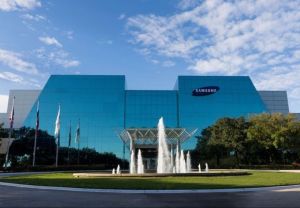Texas Officials Woo $17B Samsung Chip Plant With Tax Incentives
The project would become one of the largest foreign investments ever for the U.S. economy.
Samsung has not decided yet where to build a new $17 billion, 6 million-square-foot semiconductor U.S. plant, but officials in Williamson County and the city of Taylor, Texas, have begun approving a series of tax incentives to lure the tech giant to a 1,200-acre site in Taylor, about 25 miles outside of Austin, Texas.
The city of Austin, which has been home to a Samsung semiconductor plant for 25 years, along with two sites in Arizona and a location in Western New York, are officially still in the running but Williamson County and Taylor officials are the first to publicly adopt resolutions and agreements designed as an incentive package for the state-of-the art fabrication facility.
READ ALSO: The CDO Stack: Blockchain and Real Estate
A Samsung spokesperson stated all sites remain under consideration while the communities perform due diligence and characterized the actions taken this week by the Williamson County Commissioners Court and Taylor City Council as part of their due diligence. Depending on when Samsung makes its decision, construction on the plant could begin in January 2022, with production beginning by late 2024.
According to a prepared statement by County Judge Bill Gravell, if Williamson County is selected, the project would become the largest economic development ever in the state of Texas and the largest economic development with foreign investment in the U.S.
Information provided by the county noted in 2019 alone Samsung had made a $4.5 billion economic impact in Central Texas, supporting nearly 10,000 jobs and more than $445 million in salaries. By adding a new plant, Samsung would become the largest single facility paying taxes in Texas.
A mega-plant run by a global company will have major impacts on any community and even more so for a small city like Taylor, with a population of about 18,000, and Williamson County, with about 609,000 residents. The plant is expected to create 1,800 jobs and anywhere from 6,500 to 10,000 construction jobs as well as indirect jobs. Under the partnership agreement adopted Wednesday night, Samsung would be expected to provide a minimum of 24 internships each year for 30 years for students in the Taylor Independent School District (ISD) and make annual charitable contributions of at least $300,000 starting in 2022. The Taylor ISD also expects to collect more than $245 million in tax revenue from Samsung if the plant is built.
“The excitement about the opportunity this would bring to the students, businesses and our community in general is palpable,” Tia Stone, president of the Greater Taylor Chamber of Commerce, told Commercial Property Executive.
Stone said the largest employers in the region now are ERCOT (the Electric Reliability Council of Texas), which operates the Texas electrical grid, Taylor ISD and Durcon, a manufacturer of work surfaces and sinks for research laboratories and classrooms.
“This would be of a significant size,” Stone said of the proposed Samsung plant. “We are also really excited about the re-shoring and re-homing of semiconductors, which has national security issues.”
The resolution approved Wednesday also referred to both the “global shortage of semiconductors, which are used in the devices and technology we use every day,” and the need for the manufacturing to be done in the U.S. “in order to decrease the dependency on foreign supply chains.”
Agreements outlined
The Williamson County Commissioners approved a Chapter 381 agreement, which was described as a performance-based agreement to provide incentives to stimulate encourage and develop business and commercial activity based upon the developer meeting specific objectives. For example, the agreement calls for Samsung to construct a minimum of 6 million square feet of facilities by Jan. 31, 2026, with incremental deadlines.
If the conditions are met, the county would rebate 90 percent of taxes paid by Samsung for the first 10 years and 85 percent for the second 10 years of the agreement. The county rebate could be worth about $114 million for the first 10 years, according to the Austin American-Statesman.
The city of Taylor’s 30-year proposal, which still needs final approval by the City Council, calls for annexing the land and giving Samsung a 92.5 percent rebate on property taxes in the first 10 years, a 90 percent rebate during the second decade and 85 percent rebate in the final 10 years. The Austin American-Statesman reported the first decade of city property tax rebates would total about $240 million. By law, the city must follow several steps before executing the economic development agreements outlined in the resolution. If approved, the final City Council vote on the tax abatement agreement could be held on Oct. 14.








You must be logged in to post a comment.